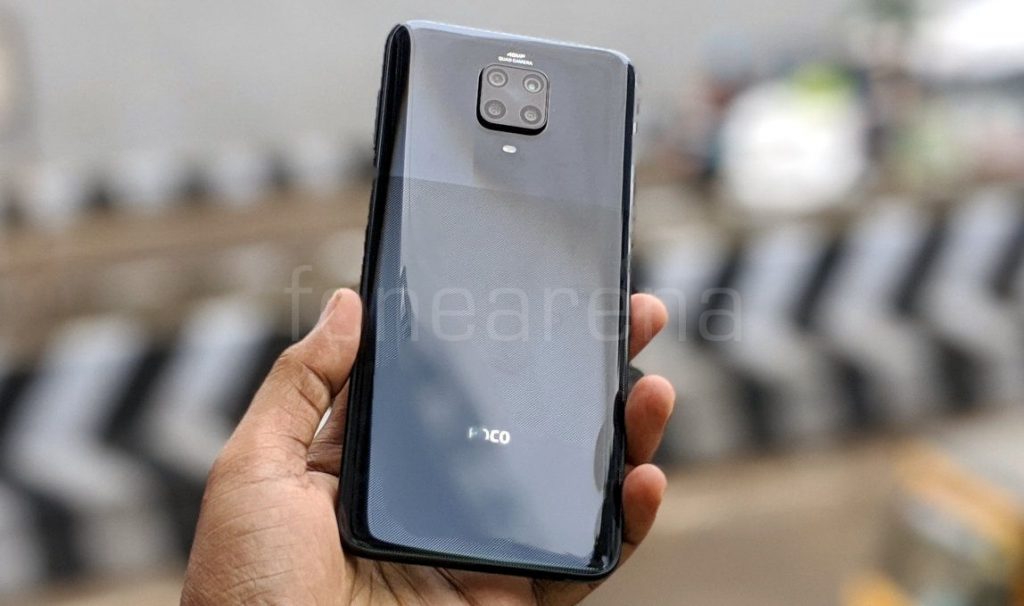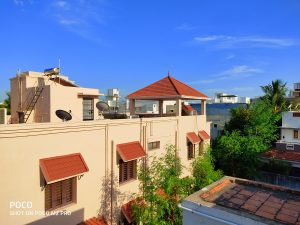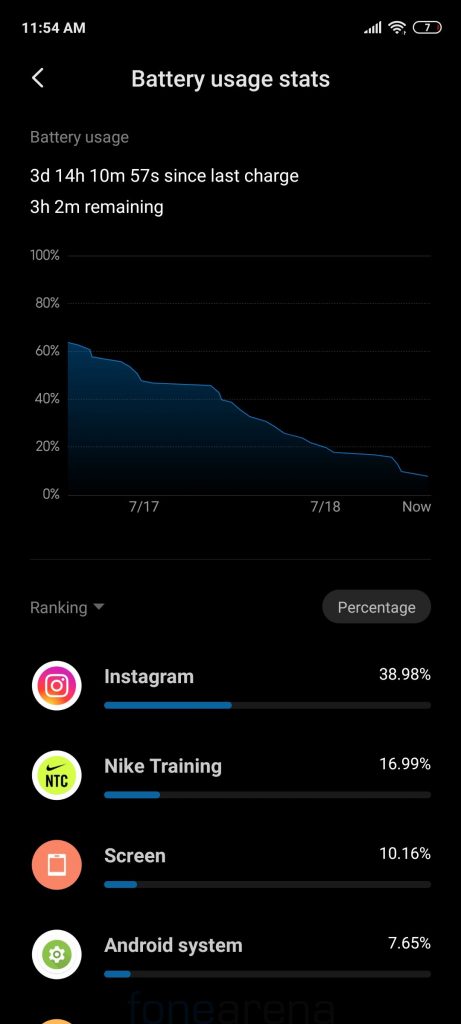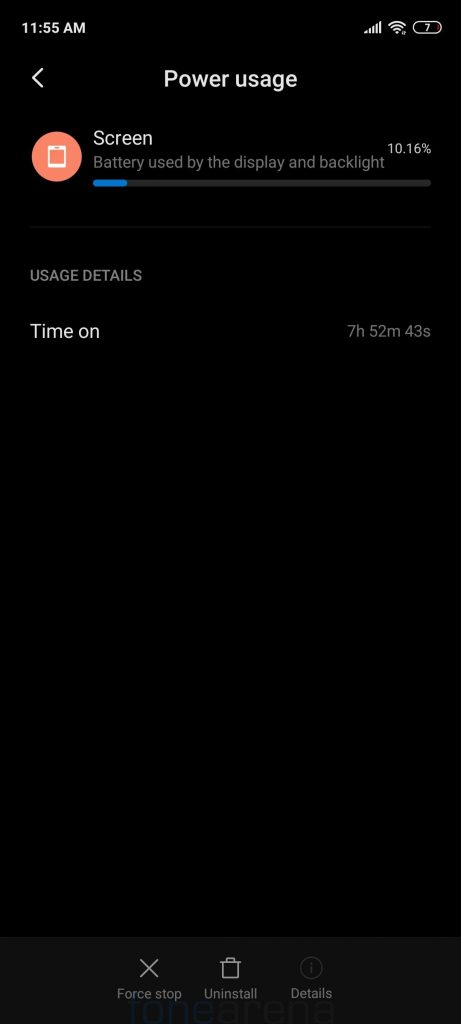Better option than Redmi Note 9 Pro under Rs. 15000

After the POCO X2 launch earlier this year, POCO launched the M2 Pro, another mid-range phone in India last month. Even though this has almost similar specifications as the Redmi Note 9 Pro that starts at the same price, this has updgraded features such as support for 33w fast charging compared to 18W charging, doesn’t have ads and features a two-tone glass back. The specifications look great on paper for the price. Let us dive into the review to find out what the device has to offer.
Box Contents
- POCO M2 Pro smartphone 6GB + 64GB in Two Shades of Black
- USB Type-C Cable
- 33W charger (5V-3A/9V-2A/9V-3A/12V-1.5A/12V-2.25A/20V-1.32A/11V-3A)
- SIM Ejector tool
- Protective case
- User manual and warranty information
Display, Hardware and Design

The POCO M2 Pro features a Full HD+ ‘Dot’ Full HD+ display with a pixel resolution of 2400 × 1080 pixels, 20:9 aspect ratio 2.5D curved glass screen with gentle rounded corners. It has a large 6.67-inch screen size and a pixel density of about 394 PPI. The display is bright, thanks to 450 nits brightness and 1500:1 contrast ratio and the colours are vibrant since it has 84% of NTSC color gamut. Sunlight legibility is good and it also has HDR support, which works for supported YouTube videos, but you can’t control it manually. The phone has Corning Gorilla Glass 5 protection.
Since this has a 20:9 aspect ratio screen, you can pinch to zoom to fill the screen when you use video apps, but the content is cropped. There is also an option to hide the notch that adds a black bar on the top. Under the display options there are different options to adjust colors and contrast based on your preference. There is also reading mode that lets you reduce the display’s blue light emission so it doesn’t cause eye strain when you are reading at night, but this will be disabled when you play HDR videos. There is Dark mode, similar to other MIUI phones.

Above the display there is an earpiece on the top edge that also houses a tiny notification LED that glows in white colour. The proximity sensor is on the bezel, but it is hardly visible. It also has a gyroscope and a magnetic sensor, otherwise known as a magnetometer. There is also a 16-megapixel camera on the front with f/2.25 aperture. There is a small bezel below the display.
The phone has Z-Shocker Haptics motor that enables custom vibration patterns across the UI for the best haptic experience, and the different can be felt when using the phone.
Coming to the button placements, the volume rockers and the power button are located to the right side. The power button houses the fingerprint scanner, just like the POCO X2. The USB Type-C port, primary microphone, 3.5mm audio jack, and speaker grill are present at the bottom. The left side houses the Dual SIM + microSD card tray and the top part houses the IR blaster and the secondary microphone. Since there are no antenna cutouts the phone doesn’t seem to have a metal frame.

On the back there is a 48-megapixel camera along with an 8-megapixel 119° wide-angle lens, 2-megapixel depth sensor and a 5-megapixel macro camera. This has slight camera bump due to the large sensor, but the camera lens is protected by a scratch-resistant glass.

Even though the phone has a large screen, it is compact to hold, thanks to the punch-hole screen. Compared to plain glass in the Redmi Note 9 Pro, the POCO M2 Pro has a two-tone glass back with Corning Gorilla Glass 5 protection, and the build looks and feels premium for the price. The two-tone feature might be distinctive for those who don’t use a case, but it it hardly noticeable with the case.

The phone also comes in Out of the Blue and Green and Greener colours, and the Aurora Blue colour has a nice gradient finish. It comes with P2i nano coating similar to most other Xiaomi phones. It packs a 5000mAh built-in battery compared to 4500mAh in the POCO X2. The phone is a bit heavy at 209 grams since it has a glass body and a large battery, but the weight distribution is decent.
Camera

The phone packs quad rear cameras, that includes a main 48-megapixel primary rear camera with single LED Flash, 1/1.72″ Samsung GM2 ISOCELL sensor, 0.8μm pixel size, f/1.79 aperture, has support for PDAF, EIS along with a secondary 8-megapixel camera with 119° ultra-wide angle lens with OmniVision OV8856 sensor, f/2.2 aperture, 1.12μm pixel size, 2-megapixel depth sensor with GalaxyCore GC02M1 for portrait as well as 5-megapixel camera with Samsung S5K5E9 sensor for 2cm macro with 1.75μm pixel size and f/2.4 aperture. It has a 16-megapixel front-facing camera with OmniVision OV16A1Q sensor and f/2.2 aperture. This is same as the Redmi Note 9 Pro.
The camera UI is familiar with other smartphones running MIUI 11. On the top there is toggle for flash, HDR, AI, Pro Colour, colour modes (Normal, Vivid, Film, Amour, Latte, Sun, Cookie, Calm, Soda, Gourmet, Glow, Berries, B&W and Fade). Pressing the menu option shows camera frame, timer, tilt-shift, show gridlines, straighten, macro, Google lens, Docs and AI Watermark. There is a front camera toggle on the bottom along with option to select modes such as Slow motion, Short Video, Video, Photo, 48MP, Portrait, Night, Panorama and Pro mode to adjust white balance, focus, shutter speed (1/4000s to 30 seconds), ISO (100 to 3200) and option to select main, ultra-wide and macro lens. You can also shoot in RAW in Pro mode. Beautify option for the front camera lets you adjust several features, in addition to smoothness. There is also 21:9 wide portrait feature which is called ‘movie’ mode which works both rear camera front cameras. There is Cam2API by default so you can side-load ported Google Camera APKs for advanced editing including RAW capture.
Coming to the image quality, daylight shots were nice with good dynamic range. After pixel binning you get 12MP output. HDR shots are better with improved dynamic range, and macro shots are good as well with decent amount of details. The dedicated 5MP macro sensor captures the details without any blur even when you go as close as 2cms, but the colours are dull compared to the main camera. Wide-angle shots are good as well, and the portrait shots have good edge detection. 48MP mode that offers a lot of details, but some images can go up to 20MB in size. Even though there is no telephoto lens, it uses the software for offering 2x zoom, which might be handy sometimes.
Low-light shots are decent, thanks to 4-in-1 Super Pixel technology that lets the camera’s sensor hardware combine 4 pixels into a single 1.6μm large pixel, and the night mode is even better making the images brighter offering more details, but there is noise when there is not enough light. Images with flash are good and the flash is not overpowering. Daylight front camera shots are good, and low-light shots are just average. There is also a new night mode feature for the front camera, which improves the images a bit. The output is 16MP in resolution, but the image size is around 4MB. Portrait shots have decent edge detection even though it is done using software, but it is not perfect.
Check out the camera samples (Click the image to view the full resolution sample.).
It can record videos at 4k resolution at 30 fps, 1080p at up to 60 fps, and it also has slow motion 720p resolution video recording at up to 960fps, but this should be 240fps converted into 960fps since the Snapdragon 720G officially supports only up to 240fps slow motion recording. You can also shoot 1080p 30 fps videos using the ultra-wide and macro cameras. It doesn’t support portrait videos yet, but POCO said that it is working on the feature, so we can expect it via an update in the future. Check out the video samples below.
Software, UI and Apps
It runs Android 10 out of the box with MIUI 11 on top. It still has Android security update for June, 2020. MIUI 11 that was introduced last year brings several features including Minimalistic Design, Quick Replies, dynamic sound effects, Dynamic Video Wallpaper and more. It should get MIUI 12 and Android 11 as well in the future. It has all the usual set of features such as Dual Apps, Second Space, App Lock, Quick Ball and more.
Inside the special features option there is Quick replies feature. This shows WhatsApp notification in a pop-up box when you are watching YouTube videos or in other apps. This is a useful feature, but it currently works for WhatsApp. Special features also has Game Turbo, Video Toolbox and Second Space.
Apart from the usual set of utility apps, Google apps and the company’s own set of apps, it comes pre-loaded with Amazon Shopping, Facebook, WPS office and LinkedIn apps and some games. It also asks for additional app installation during setup, which you can skip. You can easily uninstall these apps, but these come up when you reset the phone. Even though there is personalized ads option during set up and recommendations in all the apps, you don’t get any ads in apps, similar to other POCO phones and the Redmi K20 series.
Since the phone has an infrared sensor for remote function, it comes with Mi Remote that lets you control your home appliances easily. It worked flawlessly with Mi TV, Airtel Set-top box and other appliances. It also supports A/V receiver, DVD Player, Projector, Camera and more. Out of 6GB RAM, you get 5.58GB of usable RAM, and about 2.7GB of RAM is free when default apps are running in the background. Out of 64GB internal storage, you get about 45GB of free storage. Since this has UFS 2.1 storage, we got sequential read speeds of about 507MB/s.
Fingerprint sensor and Face unlock
The phone has a fingerprint sensor on the ride side, embedded into the power button. It immediately unlocks phone just by keeping your finger on the power button so that you don’t have to press it. You can add up to 5 fingerprints. You can also use the fingerprint for app local and payments in apps. The phone also has face unlock, but it is not as secure as fingerprint since it can be unlocked with a photo. It also doesn’t work if you use sunglasses or hats.
Music Player, FM Radio and Multimedia
The Mi Music Player is the default music player with usual Xiaomi audio effects and equalizer. It also has FM Radio with recording. Audio through the speaker is good, but it could have been louder. Since the speaker is present on the bottom, audio doesn’t get muffled when the phone is on a flat surface. Audio through earphones is good. It has Widevine L1 support so you can play HD content on Netflix, Amazon Prime Video and other streaming apps. We have even tested it and it worked without any issues.
Dual SIM and Connectivity
It supports 4G VoLTE for Reliance Jio and Airtel as well as support Dual 4G VoLTE that offers 4G in both the SIM cards at a time. There is Snapdragon X15 Cat-12 LTE modem. Other connectivity options include Dual-Band Wi-Fi 802.11 ac with dual antenna design for better Wi-Fi connectivity when gaming, Wi-Fi calling / VoWiFi support, Bluetooth 5.0 LE, GPS and it also has NavIC, but it doesn’t get locked properly. It also has USB OTG support that lets you connect USB drives. The dialer and messaging UI are similar to other Xiaomi smartphones running MIUI 11. Since this is a dual SIM phone, you get the option to select either SIMs when calling or sending a text message. Moving on, the call quality is good, and we did not face any call drops and the earpiece volume was loud.

The POCO M2 Pro’s body SAR is 0.669 W/Kg (Distance:15mm) and head SAR is at 0.914W/Kg which is below 1W/kg, even though the limit in India is 1.6 W/kg (over 1 g), but this is slightly more than the Redmi Note 9 Pro.
Performance and Benchmarks

Coming to the performance, this has the same Octa-Core Snapdragon 720G 8nm Mobile Platform as the Note 9 Pro series, which has 2 x Kryo 465 Performance CPUs (A76-based) clocked at up to 2.3GHz and 6x Kryo 465 Efficiency CPUs (A55-based) at up to 1.8GHz. It has Adreno 618 GPU with support for Open GL ES 3.2, Open CL 2.0, as well as Vulkan 1.1 graphics, 4GB/6GB LPDDR4x RAM and 64GB/128 UFS 2.1 storage.
Thanks to the slightly higher clocked larger Kryo 465 cores based on new Cortex A76, this is faster than the Snapdragon 730G that uses Kryo 470 cores. The Snapdragon 720G also features select Snapdragon Elite Gaming features. There were no frame drops in the graphic-intensive games, and PUBG works in full graphics, but doesn’t support HDR. It gets a bit warm on intensive gaming and 4G data use since it has a glass back, but it doesn’t get too hot to handle. That said, check out some synthetic benchmark scores below, which shows MediaTek Helio G90T still has an upper hand in AnTuTu mainly due to the powerful GPU, even though the 720G has a powerful CPU.



Battery life
Coming to the battery life, the 5000mAh (typical) built-in battery making it the largest battery compared to other POCO phones. It lasts for a whole day even with heavy use, and with average use it lasts for two days, thanks to optimization in the MIUI 11. I got close to 8 hours of screen on time with 3 days of use, which is excellent.

Since the phone has support for 33W fast charging, it takes about 1 hour and 10 minutes to charge from 0 to 100%, and 0 to 50% takes about 26 minutes using the bundled turbo charger, which is good for a phone with a 5000mAh battery.

It achieved One Charge Rating of 19 hours and 37 minutes in our battery test, which is almost same as the Redmi Note 9 Pro, but it is better than the POCO X2. Battery life is based on different factors such as software optimization and the processing power that requires to power the phone, so if the phone lasts for a day with heavy use, it is good.
Conclusion
Priced starting at Rs. 13999 for the 4GB RAM with 64GB version, the POCO M2 Pro is one of the best phones for under Rs. 15000. The punch-hole LCD screen with minimal bezels is good, comes with decent cameras, features premium glass body, offers smooth performance and has excellent battery life. However, there are some compromises like lack of AMOLED screen, or at least 90Hz high-refresh. This comes with No ads and has 33W fast charging which the Redmi Note 9 Pro lacks, making it a better deal for the same price.
Competition
The realme 6i is a good competition for the same price that comes with a 90Hz screen and offers a better gaming experience. The Samsung Galaxy M21 is another good option that also offers good battery life and comes an AMOLED screen.
Availability
Priced at Rs. 13,999 for the 4GB RAM with 64GB storage version, Rs. 14,999 for the 6GB RAM with 64GB storage version and Rs. 16999 for the 6GB RAM with 128GB storage version, it will be available through flash sale on Flipkart every week. It sells out quickly, and the company is not selling the phone on another other platforms or offline, so it is hard to get the phone in flash sales.
Pros
- Large ‘Dot’ display is good
- Good cameras
- Smooth performance
- Premium glass body
- Dedicated Dual SIM and microSD slots
- Excellent battery life with support for 33W fast charging
Cons
- Low-light camera performance could be better
- Might be large and bulky for some








Comments are closed.